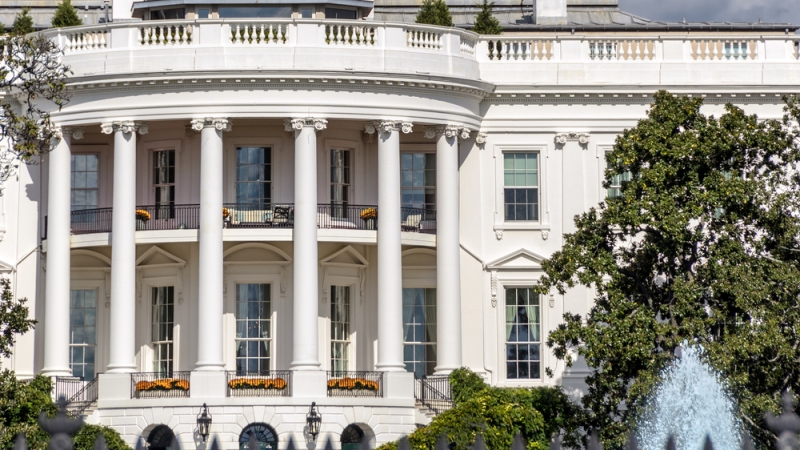
The White House is putting artificial intelligence at the center of America’s research agenda in a Tuesday memo detailing the Office of Science and Technology Policy’s (OSTP) fiscal year 2027 research and development priorities.
“In a world where American dominance is not guaranteed and our adversaries pursue whole-of-nation approaches to S&T competition, federally funded R&D must focus on targeted, transformational investments in areas such as [AI], quantum science, nuclear energy, biotechnology, national security technologies, and ambitious space exploration,” reads the memo.
Under that memo, OSTP announced plans to prioritize R&D to support the digital ecosystem and physical infrastructure necessary to support emerging technologies.
For AI, the White House said it will invest in research that spans AI architecture, efficiency, interpretability, and security, while applying that research to science, clean energy through fission and fusion, quantum technologies, and space analytics. OSTP said it also plans to evaluate how to build AI-powered robots and autonomous vehicles.
The memo highlighted the need for improved methods to measure and evaluate AI systems – a priority for OSTP Director Michael Kratsios, who has emphasized that the federal government should define what constitutes a “good eval” to guide the development of sector-specific AI assessments.
To support those AI priorities, OSTP doubled down on the need to federally support semiconductor and microelectronic manufacturing, specifically saying that agencies should collaborate with industry and academia to invest in access to trusted and assured microelectronics while maintaining American leadership in semiconductor technologies.
“Efforts should include underlying materials, devices, designs, and software, with particular focus on and coordination of the fabrication and characterization tools and facilities required for next-generation semiconductor technologies,” said OSTP.
As the 2035 quantum-ready deadline for agencies looms, OSTP said that agencies should “deepen focused efforts” in quantum S&T, saying that those efforts should include creating centers and core programs while expanding “the understanding of end user applications and supports the maturation of enabling technologies.”
“Opportunities to support pre-competitive R&D through mechanisms such as consortia and other technology transition efforts, investment in critical infrastructure and testbeds, and advanced manufacturing to enable next-generation quantum devices should also be pursued,” said OSTP.
Other emerging technology priorities include strengthening research in advanced communications technologies to bolster American leadership in 5G and 6G, while looking at “novel approaches to spectrum sharing” and applying AI to communications and cybersecurity.
OSTP gave agency’s modernization efforts a push, saying that to accelerate critical and emerging technologies, agencies should fast-track future computing by linking advanced resources into seamless workflows, while driving innovation and real-world adoption of emerging technologies.
“Agencies should explore innovative models for resource aggregation and sharing, and for public-private partnerships,” said OSTP. “Priorities include translational efforts such as consortia or centers of excellence that leverage such partnerships towards the development and sustainability of computing, software, and data solutions.”
Other S&T Priorities
Beyond emerging technologies, OSTP listed energy, security, biotechnology, and space dominance as priorities.
Under security, OSTP said it wants to look at AI-enabled intelligence, surveillance, and reconnaissance to boost decision-making and situational awareness, alongside automated space systems for conflict advantage.
Support for the Golden Dome initiative launched by President Donald Trump earlier this year through investments in sensing, trusted autonomy, space maneuverability, and scalable defenses were also outlined under the memo.
Additional efforts stressed cyber resilience by investing in R&D to prepare for cyber and electromagnetic attacks on critical infrastructure, supply chain weakness, and power grid vulnerabilities.
“Agencies should prioritize R&D for cybersecurity resilience, to ensure the Nation is prepared with postquantum cryptography to defend against future threats,” said OSTP adding that “agencies should explore novel datasets and identify opportunities to leverage AI applications to enable improved resilience.”
